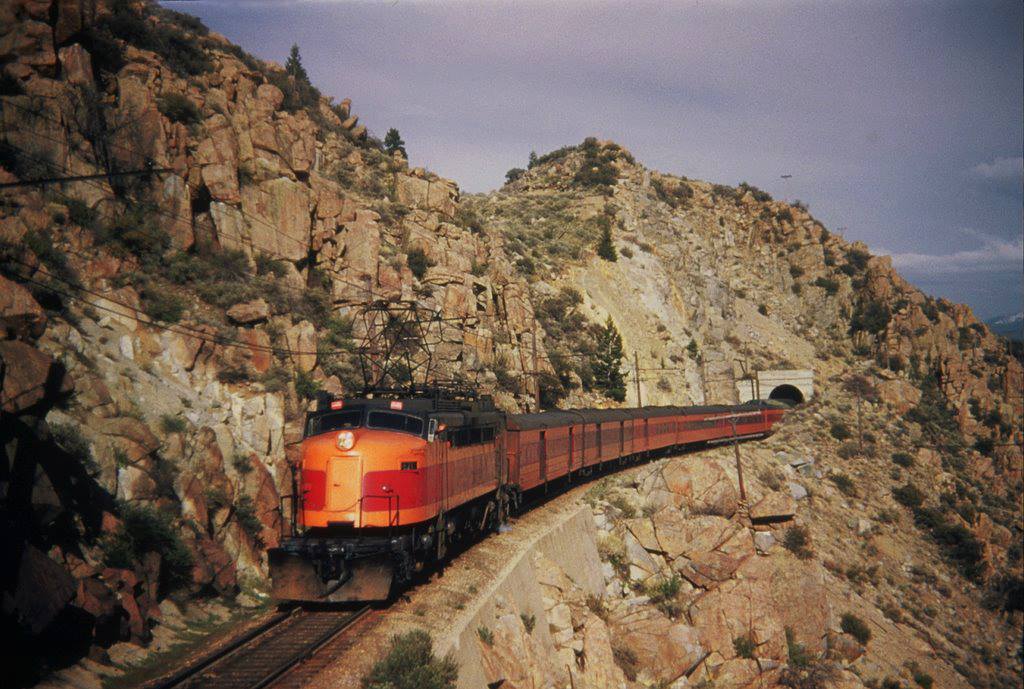In reply to 914Driver :
Blue Mountain Lake Museum has a lot of cool E36 M3. They have a little Porter 0-4-0 saddle tank from the Raquette Lake Transport Co, It'd be interesting to see them get that running and run a little loop around the perimeter.

They also have a Linn Tractor (think pre-WWII logging half track) which are pretty rare. My "grandfather" (like family, but not related) has a bunch of them, along with tons of vintage logging equipment and memorabilia, and I wish he would leave it all to the museum in his will instead of his piece of E36 M3 actual family, who's just going to argue over it and scatter it all to the winds.
drainoil said:Fueled by Caffeine said:the new suv suppose to corner like its on rails? I'm lost on this one
wrong link sorry.. something happened posting from phone. Wanted to post this.
https://www.youtube.com/watch?v=4H5Cy6NqUkQ Wanted to post that. it's an old British Pathe film about cutting up steam locmotives in the 1960's for scrap.

Why were they called a "Little Joe"? Because they were nicknamed after Josef Stalin. After WWII, the Soviet railroads needed new locomotives, but all their factories were either being rebuilt or their production being used to rebuild Russia. So the USSR government sent over several Soviet engineers to work with GE in developing a new locomotive. Twenty of them were constructed and up and running when the USSR recalled the engineers to the Motherland, while the US State Department banned their sale to the USSR.

Stuck with 20 locomotives built to the odd Russian gauge of 5ft (standard is 4ft, 8.5inches), GE offered to convert them to standard gauge at their cost if anyone was interested. In 1948, the Chicago, St. Paul, Milwaukee & Pacific (aka the Milwaukee Road) offered GE scrap price ($1 million dollars) for all 20 locomotives and the spare parts. GE accepted the offer but then the Milwaukee Road board of directors refused to release the funds.
During the Korean War, the Milwaukee Road found a demand for more locomotives on their electrified mainlines. Making the problem worse, a coal strike forced them to send most of their diesels to Lines East (which used coal-fired steam locomotives, while Lines West used oil-fired locomotives and was heavily dieselized) and caused a motive power shortage on Lines West. Milwaukee Road returned to GE with the same $1 million offer and GE accepted, only for the railroad to learn that all the spare parts and 8 of the locomotives had been sold (3 to the South Shore Line, and 5 to Brazil), so they received no parts and only 12 locomotives.
As delivered, the railroad was less than impressed with the new locomotives. For starters, all the controls and gauges were still in Russian. They also were borderline too powerful, being prone to wheelslip and putting such a huge draw on the substations that the railroad could not effectively run more than 2 of them on the same line. After a number of reconfigurations to both the locomotives and the railroads electrical system, they became excellent engines, being capable of 5000+hp and 70mph running. The Milwaukee Road ran theirs right up until the end of their electrified operations in 1974.
Pete Gossett said:In reply to NickD :
Are those B-units in 2 of the pics? They don't appear to have windshields.
Milwaukee took the controls out of one of the cabs and blanked off the windows. They then mounted upgraded circuit breakers and a steam generator for passenger car heat in that end instead. Milwaukee preferred to turn their electric locomotives around, instead of taking advantage of double-ended operation.
At the Brunswick, Maryland CSX/MARC yard last Friday morning, I was getting ready to hop on a MARC III car to look at some equipment...I told the other guy who was with me to hold on a second, stepped back off the car, and took this.


A hideously filthy Southern Pacific SD45T "tunnel motor" in the Kodachrome paint scheme from the aborted Southern Pacific Santa Fe merger. The running joke was that SPSF stood for Shouldn't Paint So Fast.
The SPSF paint scheme was a pretty clever idea. In the late 1980s, the Santa Fe and the Southern Pacific began looking into the idea of a merger. So confident were they that such a merger would succeed, both railroads began paint locomotives in the yellow and red "Kodachrome" paint scheme. Each railroad put their letters on, leaving room to add the other's when the merger went through, making it easy to take on the new road name.


See how SP put their lettering farther forward so they could tack an SF at the end, while SF put their lettering farther back to squeeze and SP ahead of it?

They even went as far as creating the Santa Fe Southern Pacific Corporation to operate both railroads. But then in 1989, the ICC determined that the merger was borderline monopolistic and denied it. The holding company continued to operate the Southern Pacific at arm's length until they sold it off to Rio Grande Industries, who owned the Denver, Rio Grande & Western, and then renamed itself as the Santa Fe Pacific Corporation. In 1995, the Santa Fe merged with the Burlington Northern to make the BNSF, while the following year, the Southern Pacific and DRG&W were bought up by Union Pacific and ceased to exist.
NickD said:
Last winter, DW took me to a local convention center model train expo for my birthday. One of the layouts on display was one of those powered by a working catenary system. It wasl cool.
Duke said:NickD said:
Last winter, DW took me to a local convention center model train expo for my birthday. One of the layouts on display was one of those powered by a working catenary system. It wasl cool.
Wow, that's a whole 'nother level of dedication.
In reply to NickD :
Yeah, at first I assumed it was just for scenery, but the traveler was striking sparks every time it hit a support.

Recently learned about the Muskingum Electric Railroad, which is essentially the world's largest model railroad. They had two locomotives, a pair of GE E50s numbered 100 and 200, that were electric and fully automated. The railroad was two straight side-by-side tracks from the coal mine in Beverly, Ohio to the powerplant 20 miles away in Relief, Ohio. There were no other customers, no yards, no turntables or wyes. The unmanned locomotives pushed empty cars to the coal mine where they were loaded with coal and then pulled the loaded cars back to the powerplant. It was opened in 1968 and run until 2001, by which point the coal mine had played out and there was no reason for the line to exist. The locomotives, cars and rails were scrapped in 2004.
Interestingly, most of the coal they transported was mined by Big Muskie, the world's largest dragline. Big Muskie ran from 1977 until 1991, at which point it became financially unfeasible to operate. It was parked for 8 years, at which point the EPA required it to be scrapped to begin rehabilitating the mine.

In reply to Duke :
As a kid I had some HO electric busses that ran off a pair of overhead lines. They were a bit finicky, but were cool when they worked.
In reply to NickD :
Beverly, OH is about 30 mins from where I grew up. I had no idea about that railroad. Interesting.

I'd always wondered what the weird handrail-looking things on some PRR equipment was. Turns out, it was a "trainphone". Before radio became commonplace, PRR was looking for a way to get word to their crews that was better than passing up pieces of paper or having them stop. So PRR used telegraph wires or the actual rail itself as the shore transmitter with a low-frequency signal and then the poles on the locomotives or cabooses were the antenna, and passed it to a handset that looked like a telephone inside the cab. It only could transmit about 100ft but it was better than the previous system. The problem was, they could not use it on their electrified lines because of interference and their electrified lines were their busiest. The rise of radio did the "trainphone" in.

A trainphone handset in the cab of a PRR T-1. There was also a speaker that could be used for emergencies
You'll need to log in to post.